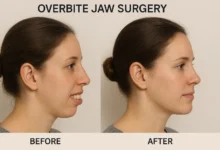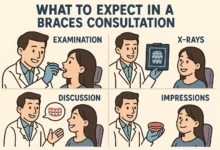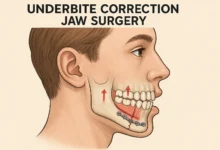Jaw Surgery Cosmetic Benefits: Transform Your Smile and Confidence
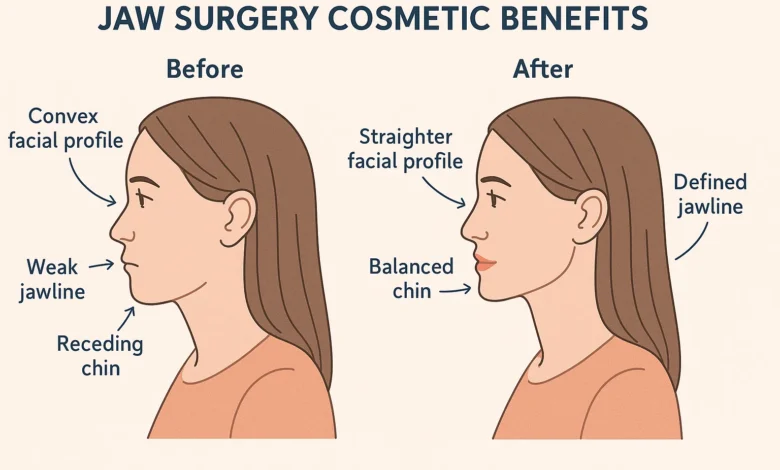
Jaw Surgery Cosmetic Benefits: The Complete Guide to Facial Transformation
Quick Answer: Cosmetic advantages of jaw surgery are substantial and achieve dramatic changes in the harmony of the face as well as profile and appearance. These cosmetic improvements are, however, often incidental results of an operation that is medically necessary, such as to correct a functional problem, such as a bite problem, sleep apnea, and chronic jaw pain. Included in the change are better facial symmetry, a more prominent jawline, stronger lip support, and a better appearance of the nose among other changes that are experienced by the patients.
Have you ever stared in the mirror and then get the feeling that there was something wrong with your facial composition, but you are not exactly sure what? Or maybe you have had a crossbite and all it takes is to eat, like how you feel about your image and so on? You’re not alone. Thousands of individuals have undergone orthognathic (jaw) surgery every year and have found out that the operation has much more to offer than they could have ever thought.
Although most of the individuals can be found searching the internet with the key word of jaw surgery cosmetic benefits with the sole aim of achieving a purely aesthetic objective, the truth of the matter is not as simple as that-and it is even more gratifying. This all-encompassing informative guide will examine in detail the actual dimensions on how jaw surgery can change not only your looks, but also the quality of life. Based upon existing medical practices and patient experiences, we will cut the myths down to reality and make you see whether this life altering operation is appropriate to you.
What is Jaw Surgery? Understanding the Foundation
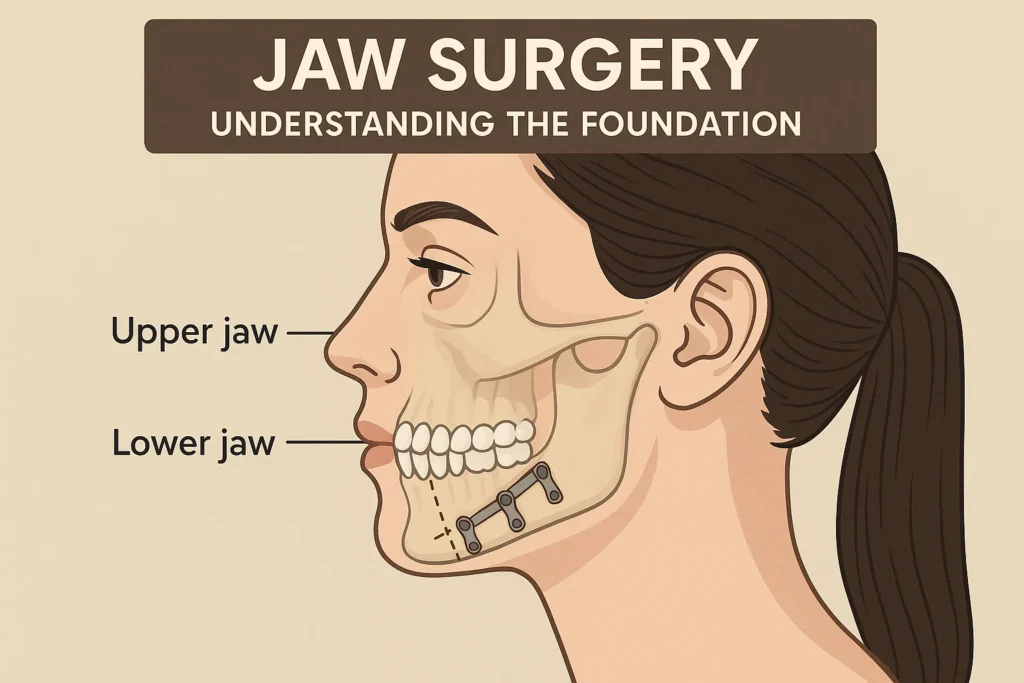
Jaw surgery, also known as orthognathic surgery (a medical term) is a procedure used to correct dentoskeletal anomalies by repositioning the jawbones in a very precise manner. However, contrary to the common thought, it is not just cosmetic as it is such a functional reconstruction that, in this case, results in such great aesthetic gains.
How does jaw surgery work? The procedure is typically performed by an oral and maxillofacial surgeon in collaboration with an orthodontist. The process involves:
- Comprehensive Planning: With the help of the latest 3D imaging and dental models, the specific bone motions have been planned.
- Orthodontic Preparation: Prior to the surgery (typically 12-18 months) teeth are aligned using braces or Invisalign.
- Surgical Procedure: Bones of the jaws are surgically removed and replaced following which the plates and screws are put in place.
- Recovery Phase: A rest time of a few weeks consisting of particular nutritional and activity limitations.
- Orthodontic Finishing: Final tooth adjustment following surgery (normally 6-12 months)
Key Insight: The highest success of the jaw operation is achieved when the patients know that this is mostly a functional operation with cosmetic advantages rather than vice versa. Such a view makes the expectations realistic and the outcomes more satisfactory.
The Primary Medical Reasons for Jaw Surgery
It is vital to know the medical requirements that has most of the jaw surgery choices before discussing the cosmetic advantages. The American Association of Oral and Maxillofacial Surgeons states the following functional problems as the main causes of jaw surgery:
1. Severe Malocclusion (Bite Problems)
When teeth don’t meet properly, it can cause uneven tooth wear, difficulty chewing, and chronic jaw pain. Common conditions include:
- Overbite: Upper teeth significantly overlap lower teeth
- Underbite: Lower teeth protrude beyond upper teeth
- Open Bite: Teeth don’t meet when the mouth is closed
- Crossbite: Upper teeth sit inside lower teeth
2. Obstructive Sleep Apnea
In the event that the conservative treatments fail, jaw advancement surgery can be used to significantly open the airway by moving the jaw forward, which is likely to fix serious sleep apnea.
3. TMJ Disorders and Chronic Pain.
The presence of misaligned jaws may cause too much stress on the temporomandibular joints, which causes chronic pain, headaches, as well as restricted movement of the jaw.
4. Congenital Problems and Facial Injury.
Cleft lip/palate or accidents can lead to conditions that may demand surgical intervention to reconstruct the jaw and make it functional and appealing.
The Transformative Cosmetic Benefits of Jaw Surgery
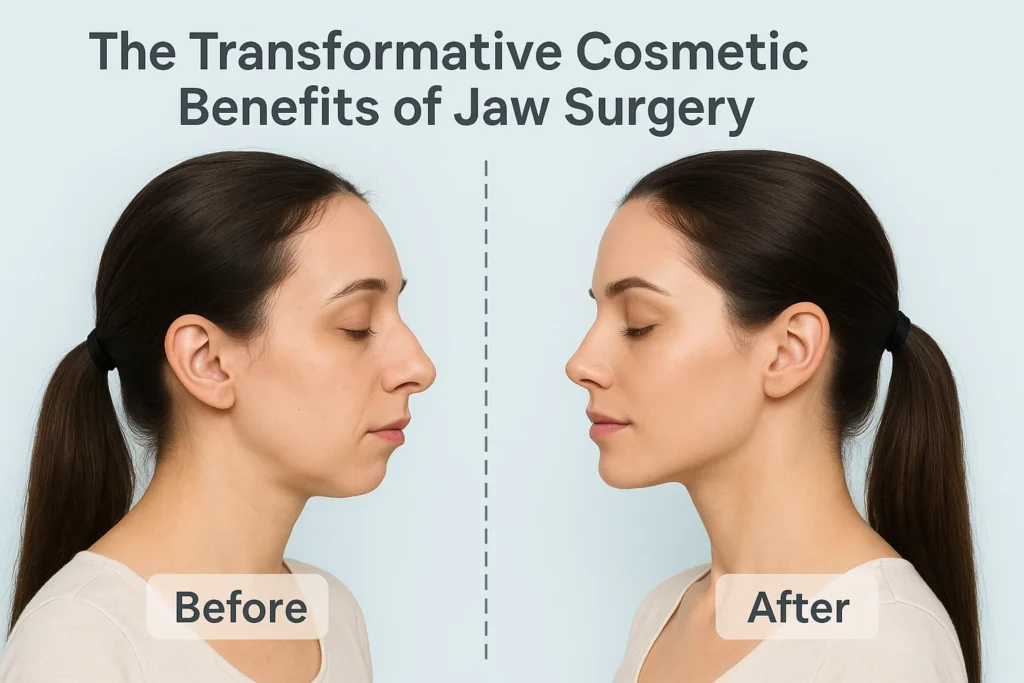
Now we come to the question that everybody asks; Does jaw surgery make you look better? It would be a resounding yes- when done by a qualified surgeon with the right motives. The cosmetic enhancements are important in the sense that they tend to help correct the skeletal framework on which the appearance of the face is pegged on.
Increased Facial Harmony and Balance.
The greatest cosmetic advantage of jaw surgery is the change in proportions of the entire face. Properly aligned jaws result in a natural balance of upper, middle and lower thirds of the face. It is this that people tend to think of as beautiful or handsome without really understanding the reason why.
Profile Transformation
Most patients are noted to have outstanding profile upgrades. The chin will become firm and set in, too large a jaw will be drawn inward to the normal level and the connection of the nose and lips to the chin will be in harmony. A pre and post photography usually depicts such extreme changes of profile that the patient seems to have gone through several cosmetic surgeries.
Better Contouring of the Jawline.
Surgery of the jaw would result in a more defined jawline that is more aesthetically pleasing since positional problems are corrected, as well as asymmetry. This is mostly evident in those patients who have jaw lengthening or reduction procedures.
Improved Lip fullness and nose attractiveness.
A surgery of the upper lip can help to support the upper lip better and minimize a gummy smile. Curiously, even the practice of moving upper jaw can slightly alter the nose, expand the nostrils somewhat or alter the angle of the nasal tip, changes that are generally deemed as an enhancement of a face.
Symmetry Correction
One such problem is the asymmetry of the face due to the asymmetry of the jaw development which is difficult to correct without surgery. These underlying skeletal disparities can be corrected by jaw surgery to make the person appear more balanced and symmetrical.
Jaw Surgery Types and Their Specific Cosmetic Outcomes
Different types of jaw and facial surgery produce distinct cosmetic results. Understanding these variations helps set realistic expectations.
| Procedure Type | Primary Functional Goal | Cosmetic Benefits |
|---|---|---|
| Maxillary Osteotomy (Upper Jaw) | Correct crossbite, open bite, or excessive gum display | Improved midface projection, better lip support, reduced gummy smile |
| Mandibular Osteotomy (Lower Jaw) | Correct underbite or overbite | Enhanced chin projection, improved jawline definition, better neck angle |
| Genioplasty (Chin Surgery) | Address chin deficiencies or excess | Improved chin projection/ reduction, enhanced facial balance |
| Double Jaw Surgery (Bimaxillary) | Correct complex bite issues and facial imbalances | Comprehensive facial harmony, balanced profiles, improved symmetry |
Jaw Surgery vs. Non-Surgical Alternatives: A Realistic Comparison
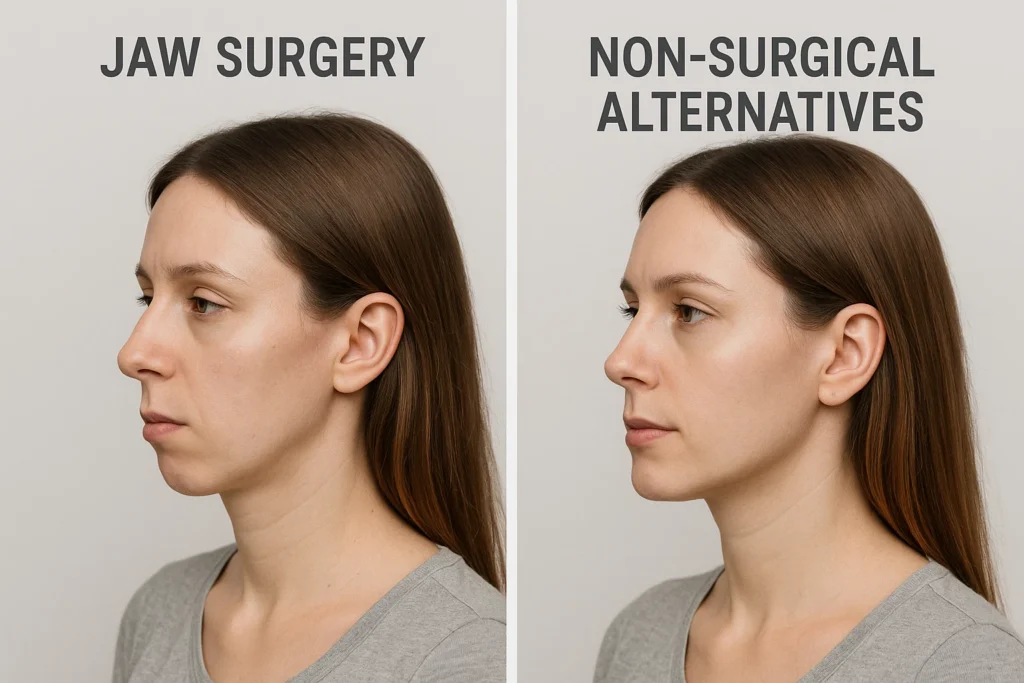
Many people wonder about alternatives like jaw filler or jaw exercises. While these have their place, they cannot replicate the structural changes achieved through surgery.
| Treatment | Best For | Limitations | Longevity |
|---|---|---|---|
| Jaw Surgery | Structural issues, functional problems, significant asymmetry | Invasive, longer recovery, higher cost | Permanent |
| Jaw Fillers | Minor contouring, subtle enhancement | Cannot change underlying structure, limited correction | 12-24 months |
| Jaw Exercises | Muscle tone improvement | No skeletal change, minimal cosmetic impact | Requires maintenance |
| Botox Masseter Reduction | Reducing overly prominent jaw muscles | Doesn’t change bone structure, temporary | 4-6 months |
Expert Perspective: “While non-surgical options have their place, they’re like putting new siding on a house with a faulty foundation. Jaw surgery addresses the underlying structure, which is why the results are so transformative and permanent.” – Dr. Michael Chen, Oral and Maxillofacial Surgeon
The Reality of Jaw Surgery: Pros, Cons, and Considerations
When evaluating is jaw surgery worth it, patients must consider the complete picture—both the remarkable benefits and the significant challenges.
The Advantages (Pros)
- Dramatic functional improvement in chewing, breathing, and speaking
- Life-changing cosmetic enhancement that addresses the facial foundation
- Permanent results that don’t require ongoing maintenance
- Comprehensive solution that often eliminates the need for multiple other procedures
- Potential health insurance coverage when medically necessary
The Challenges (Cons)
- Significant recovery period (typically 2-6 weeks for initial healing)
- Temporary discomfort and dietary restrictions during recovery
- Financial investment (though often partially covered by insurance)
- Permanent sensation changes in some cases (usually minor)
- Extended treatment timeline (often 2-3 years including orthodontics)
Recovery Timeline: What to Expect After Jaw Surgery
Understanding the recovery from jaw surgery helps patients prepare mentally and practically. While individual experiences vary, most follow this general timeline:
First 2 Weeks: Initial Healing Phase
- Maximum swelling and discomfort occurs at day 3-4.
- Liquid diet necessary, moving on to soft foods
- Limited activity, rest and heal
Weeks 3-6: Gradual Improvement
- Swelling goes down significantly but it does not go away completely
- Return to light work and possible work/school.
- Soft food diet, variety can be increased
Months 2-6: Settling and Adjustment
- 90% of swelling is resolved, gradual fine changes take place
- Resumption to normal diet and all activities
- New bite sensation adaptation and facial sensations
Beyond 6 Months: Final Results
- Healing of bones and soft tissue.
- completion of final orthodontic movements
- Aesthetic advantages become fully realized
Invisalign Lifestyle Tips: How to Make Your Treatment Easier
Frequently Asked Questions (FAQ)
Is jaw surgery covered by health insurance?
In all cases, health insurance will normally cover jaw surgery in case of a medical necessity to repair a functional impairment such as severe sleep apnea, failure to chew adequately or recorded TMJ disorders. Cosmetic surgery is not provided as pure. The office of your surgeon will assist you in recording the medical necessity to be insured.
What is the price of cosmetic jaw surgery?
Cosmetic jaw surgery cost is normally estimated to be between 20,000 to 40,000+ in the absence of insurance cover, according to the complexity, experience of the surgeon, and the geographic location. It typically covers the cost of surgeon, anesthesia and facility expenses but not orthodontics.
Is jaw surgery safe? What are the risks?
Jaw surgery is normally safe when it is conducted by a skilled oral and maxillofacial surgeon. Nevertheless, as with any significant surgery, there are infections, damage to nerves (which may lead to temporary or permanent numbness), bleeding, and complications of anesthesia. Provided that the right procedures are taken, serious complications are not common.
Will I lose a lot of weight during the Jaw surgery?
The average weight loss of most patients in the first two weeks of recovery is 5-15 pounds because of dieting. This weight loss in the jaw surgery is temporary because normal eating patterns are resumed after the healing process. Shakes can be used during recovery to ensure a sufficient calorie consumption.
What makes me know whether I am a good candidate of jaw surgery or not?
A full assessment by an oral surgeon and orthodontist can help in the determination of whether or not you require jaw surgery. They will measure the alignment of your teeth, the relationship of your jaw, airway, and proportions of your face to know whether surgery would result in significant functional and cosmetics value.
Conclusion: Weighing the Life-Changing Benefits
To make the decision of having jaw surgery is serious and the pros and the actual challenges must be thought about in detail. Cosmetic advantages of jaw surgery are truly transformative- establishment of harmony of faces, fine profiles, and self-confidence. Nevertheless, the aesthetic enhancements are most significant whenever they are combined with the solution of functional issues, which could have influenced the quality of life over the years.
Patients with realistic viewpoints coming to jaw surgery believing that it is more of a functional repair than a cosmetic transformation have recorded the largest levels of satisfaction. This process would take a lot of patience in terms of orthodontic preparation, recovery, and healing, though in case of severe jaw disparities, it can be very life-changing.
Your Next Step: The first step to take a consultation with experienced professionals is the most relevant step in case you are thinking about the possibility of a jaw surgery. Arrange an appointment with an orthodontist who has many contacts with oral surgeons or just make an appointment with an oral and maxillofacial surgeon. They will be able to give you personalized information depending on your particular scenario and also assist you in knowing the possible functional and cosmetic advantages you can possibly expect.

